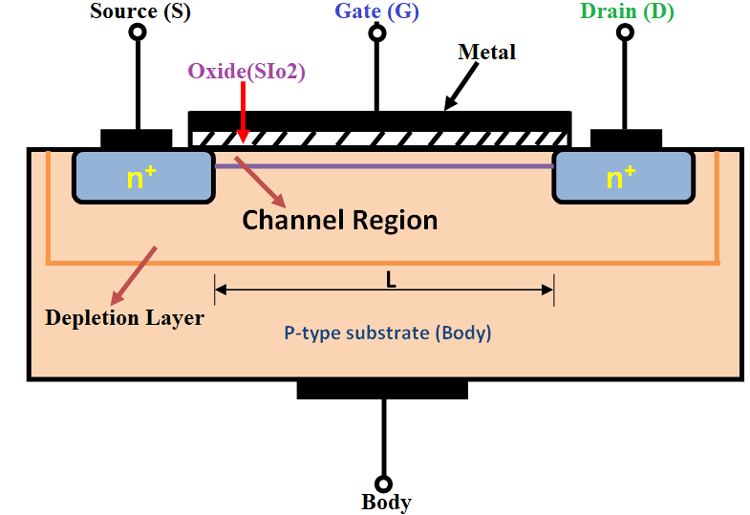MOSFET
A MOSFET is a type of transistor we can use as a digital switch. The name stands for Metal Oxide Semiconductor Field Effect Transistor. The first MOSFET was made in 1959 by Mohamed M. Atalla & Dawon Kahng.
The MOS part describes the gate structure, so the layering is ‘metal’ on top of an thin oxide layer, which lies on top of the (silicon) semiconductor channel. In practice the gate is typically polysilicon and not metal.
The MOSFET eventually dominated VLSI chips due to it being easy to manufacture in volume and easy to miniaturise - at least to start with.
It has become the basic building block of modern electronics.
They are the most manufactured object in the world: 1.3×10^22 of them have been made between 1960 and 2018 - Wikipedia
Simplified operation
 Image is from components101
Image is from components101
When a voltage is applied across the gate and body, an electric field is formed in the channel. This field attracts the charge carriers to the channel region where they can then work to conduct electricity.
In an N type MOSFET built on a P type substrate, the majority charge carriers are holes, and it’s the minority carriers (the electrons) that get attacted to the gate and form the conductive channel between the drain and source.
For a P type MOSFET, it’s all reversed. The substrate is N, the majority carriers are electrons and the minority carriers doing the work are holes.
The holes have less mobility than electrons, so you will typically see that for two matching N and P MOSFETs, the P type will need to have a larger (wider) channel, typically by a factor of 2 or 3 times. Standard cells often do not try to match P and N strengths because this will make the cell too big.
To get the right ratios of charge carriers, the silicon needs to be doped.
This is a good video on the operating principles of a MOSFET by Veritasium:
Making a MOSFET
MOSFETs are made by using a photolithograhic process. It is possible to make them in your garage, if it’s well equipped!
Course feedback
It would've taken me months, if not years, to make the progress I made in a couple of days. The tutorials are so helpful and the focus on practicality blends so well with the way I learn. I love it!
Saad (digital course)